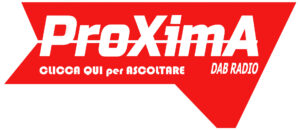Content
Clearly, this is unfavorable because the actual price was higher than the expected price. For the direct material variances we show two tables. One is for the situation when the total direct materials variance is based on the same quantity of inventory purchased as the quantity of inventory used during the month. In such situations the AQ x SP is the ending point for the efficiency variance and starting point for the price variance . Labor efficiency variance equals the number of direct labor hours you budget for a period minus the actual hours your employees worked, times the standard hourly labor rate. For example, assume your small business budgets 410 labor hours for a month and that your employees work 400 actual labor hours. For improvements in budgeting, planning and controls; Variance is as important a tool as forecasting.
Which of the following is true of standard quantity of materials allowed? It is the product of unit quantity standard and actual output. It is the product of unit quantity standard and standard output.
The variance is unfavorable because more materials were used than the standard quantity allowed to complete the job. If the standard quantity allowed had exceeded the quantity actually used, the materials usage variance would have been favorable.
Performing the analysis of variances of both material price and usage separately can help top management identify the lapses in the calculation of the standards. The Variance analyses are the key starting points for any top management deciding on annual or quarterly budgets. Any firm aiming for total quality management controls and improved efficiencies must carry out the direct material variance analysis, as it improves the set standards. Top management plans for the company in strategic terms, the operational managers then implement those plans. For a manufacturing facility, efficiency in operations, direct material costs, elimination of wastes, and continuous improvements are key points to success. Adverse or unfavorable variance can be caused due to several reasons.
The standard materials cost of any product is simply the standard quantity of materials that should be used multiplied by the standard price that should be paid for those materials. Actual costs may differ from standard costs for materials because the price paid for the materials and/or the quantity of materials used varied from the standard amounts management had set. These two factors are accounted for by isolating two variances for materials—a price variance and a usage variance. The direct material cost variances including material price variance, material usage variance, material mix variance and material yield variance.
Standard costs are used to establish the flexible budget for direct materials. The flexible budget is compared to actual costs, and the difference is shown in the form of two variances. The materials quantity variance focuses on the quantity of materials used in production.
Related Accounting Q&a
Typically, the hours of labor employed are more likely to be under management’s control than the rates that are paid. For this reason, labor efficiency variances are generally watched more closely than labor rate variances. Notice how the cause of one variance might influence another variance. This also might have a positive impact on direct labor, as less time will be spent dealing with materials waste.
- The material price variance reveals the difference between your standard price for materials purchase and the amount you actually paid for those materials.
- During the year, 700 Units were sold.
- Total labor variance (11,100 U + 2,000 U)$ 13,100 UnfavorableSince both the rate and efficiency variances are unfavorable, we would add them together to get the TOTAL labor variance.
- The actual output was less than expected or practical capacity.
- Enter your email below to begin the process of setting up a meeting with one of our product specialists.
Instead, it merely means that the net income was lower than the forecasted projections for the period. A budget is a forecast of revenue and expenses, including fixed costs as well as variable costs. Budgets are important to corporations because it helps them plan for the future by projecting how much revenue is expected to be generated from sales.
What Is Direct Materials Mix Variance?
The difference between budgeted fixed and variable overhead costs. The difference between budgeted and applied fixed overhead costs.
The sample variance, s2, is used to calculate how varied a sample is. A sample is a select number of items taken from a population. The solution is to take a sample of the population, say 1000 people, and use that sample size to estimate the actual weights of the whole population. Statisticians use variance to see how individual numbers relate total direct materials variance to each other within a data set, rather than using broader mathematical techniques such as arranging numbers into quartiles. The advantage of variance is that it treats all deviations from the mean the same regardless of their direction. Therefore, adverse variance can only happen when there is changes in market price of the materials.
What Is F And U In Accounting?
The unfavorable variance could be the result of lower revenue, higher expenses, or a combination of both. Oftentimes, an unfavorable variance could be due to a combination of factors. The shortfall could be due, in part, to an increase in variable costs, such as a price increase in the cost of raw materials, which go into producing the product. The unfavorable variance could also be due, in part, to lower sales results versus the projected numbers. Unfavorable variance is an accounting term that describes instances where actual costs are greater than the standard or projected costs.
It can be achieved under efficient operating conditions. This variance assesses the economy rather than the efficiency of the way an entity using its resources. QuickBooks Each variance listed below has a clear explanation, formula, example, and definition to help you get better to understand both for your example and practice.
Depreciation on factory equipment can be calculated in advance. The costs of insurance policies are tied to a contract. Even though budget and actual numbers may differ little in the aggregate, the underlying fixed overhead bookkeeping variances are nevertheless worthy of close inspection. The variable overhead efficiency variance can be confusing as it may reflect efficiencies or inefficiencies experienced with the base used to apply overhead.
2 Calculations For Direct Materials And Labor
Mean absolute deviation helps us get a sense of how “spread out” the values in a data bookkeeping set are. The square root of the variance is called the Standard Deviation σ.
Terms Similar To Direct Material Variance
When less is spent than applied, the balance represents the favorable overall variances. Favorable overhead variances are also known as “overapplied overhead” since more cost is applied to production than was actually incurred. A budget variance measures the difference between budgeted and actual figures for a particular accounting category, and may indicate a shortfall.
For Blue Rail, remember that the total number of hours was “high” because of inexperienced labor. These welders may have used more welding rods and had sloppier welds requiring more grinding. While the overall variance calculations provide signals about these issues, a manager would actually need to drill down into individual cost components to truly find areas for improvement. Before looking closer at these variances, it is first necessary to recall that overhead is usually applied based on a predetermined rate, such as $X per direct labor hour. This means that the amount debited to work in process is driven by the overhead application approach. This will become clearer with the following illustration.
In this lesson, learn what process costing is and how to use this technique. The high-low method is one type of cost-volume analysis used in accounting. This lesson describes how it is used and explains the formula for quickly computing an estimated cost per unit. This lesson introduces the topic of equivalent units and demonstrates how to calculate this number. It also calculates per unit cost of production and illustrates a production cost report and the way in which the corresponding numbers are used by management. As raw materials move into production, you record a transfer from the raw materials stage to the WIP stage. When the product is finished, it goes from WIP to finished goods.
In cost accounting, a standard is a benchmark or a “norm” used in measuring performance. In many organizations, standards are set for both the cost and quantity of materials, labor, and overhead needed to produce goods or provide services.
While we haven’t finished the calculation, it’s smart to pause here for some analysis. You multiply the difference by the standard cost in the next step, turning the material quantity variance into a dollar amount. If that doesn’t help you understand what went wrong to cause a variance, stop here. Direct materials are the building blocks of the production process. With the help of machinery and other equipment, workers create finished goods that once started as raw materials. If your business makes fancy bow ties, the direct material is silk, for instance.










